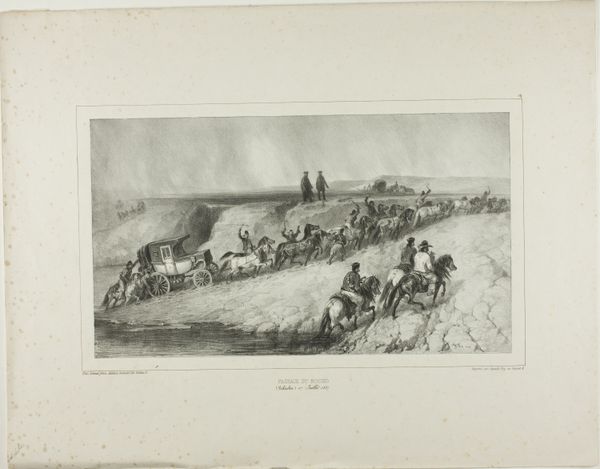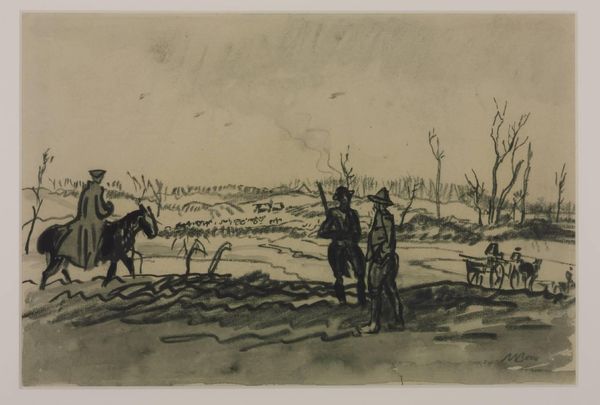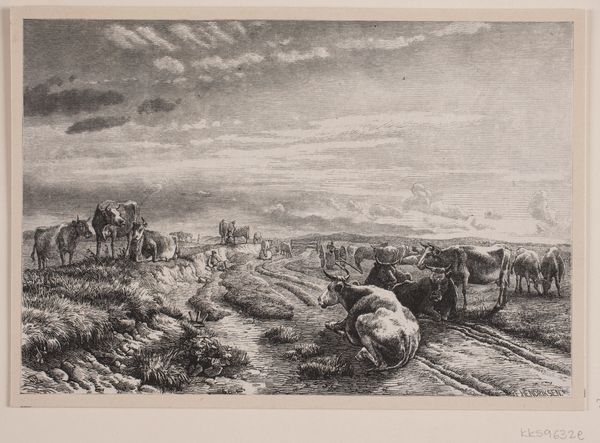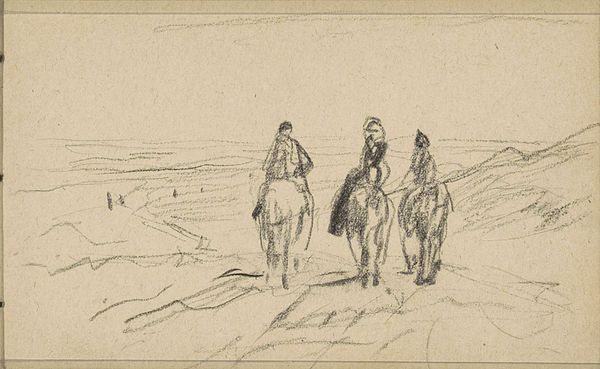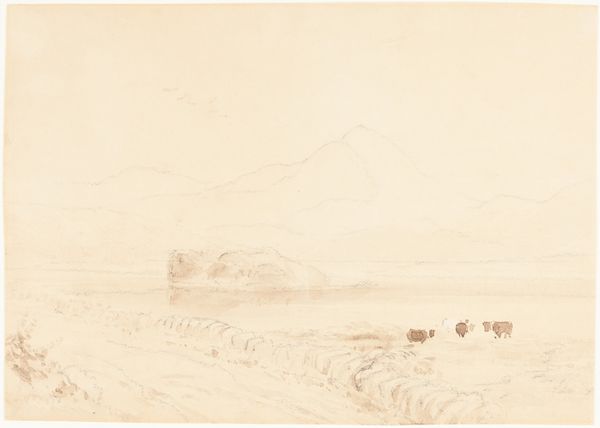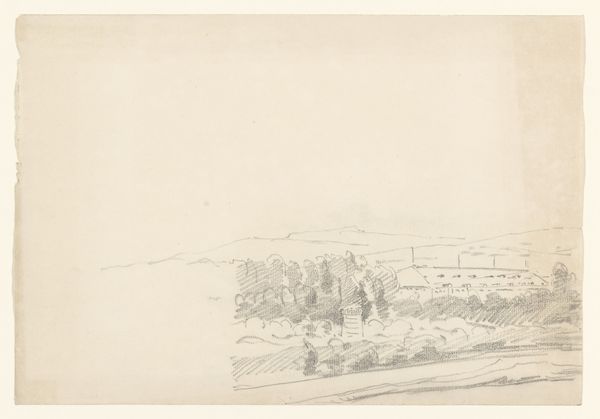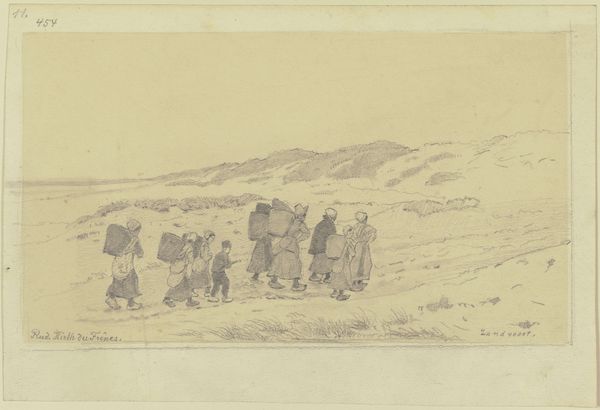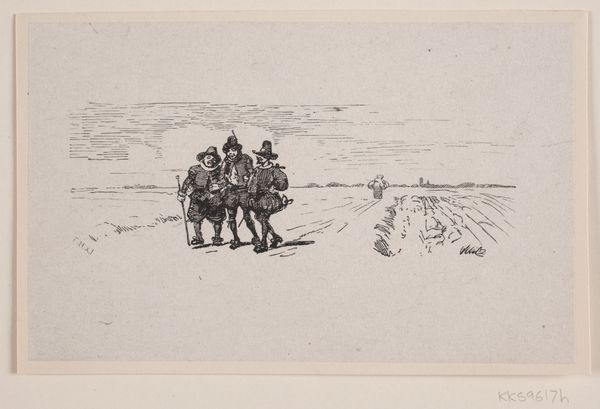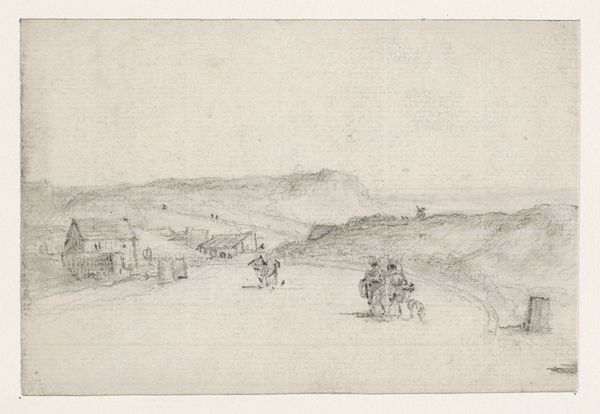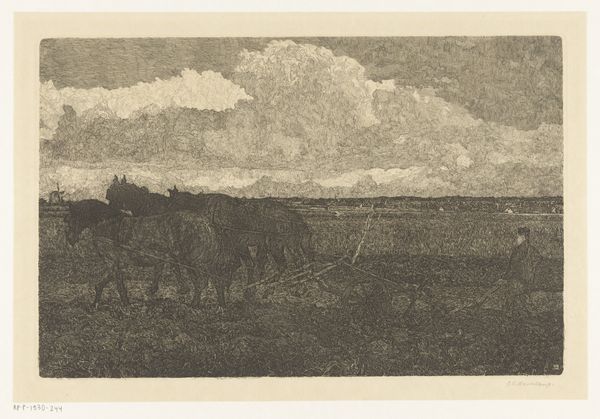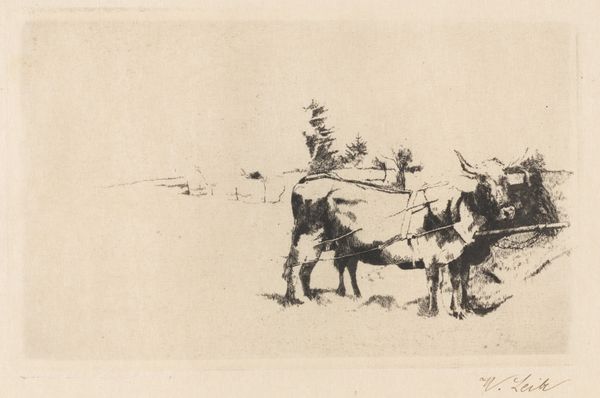
Dimensions: height 340 mm, width 425 mm
Copyright: Rijks Museum: Open Domain
Editor: This etching, “Oorlogslandschap,” created around 1930 by Yamagishi Kazue, it’s powerfully stark. The barren landscape and the artillery give it such a desolate, lonely atmosphere. What jumps out to you when you look at this piece? Curator: I see a powerful statement about the institutionalization of violence. Consider the timing. Made circa 1930, the work sits squarely between World War I and the escalating tensions that would lead to World War II. Editor: So it's speaking to the in-between? Curator: Precisely. The seemingly mundane depiction of soldiers and equipment belies a deeper commentary. The composition is quite interesting. Notice how the mountains are dwarfed, almost disappearing into the sky, symbolizing the insignificance of individuals against the machinery of war? Editor: That’s a really interesting observation. The landscape feels very oppressive and seems to minimize the soldiers as well. Curator: Exactly. Kazue isn’t glorifying war; instead, the artist exposes its dehumanizing effect, the way it turns individuals into cogs in a destructive machine. The "realism" grounds us. How does this influence our current understanding of conflict and our roles in it? Editor: I never really considered that realism could serve to deglamorize something, rather than just record it. Curator: It’s a testament to the piece's enduring relevance, right? It compels us to question the socio-political forces that normalize such scenes. Editor: Looking at it this way gives the piece a much more contemporary edge, it shows how even landscapes can be charged with a political voice! Thanks!
Comments
No comments
Be the first to comment and join the conversation on the ultimate creative platform.
